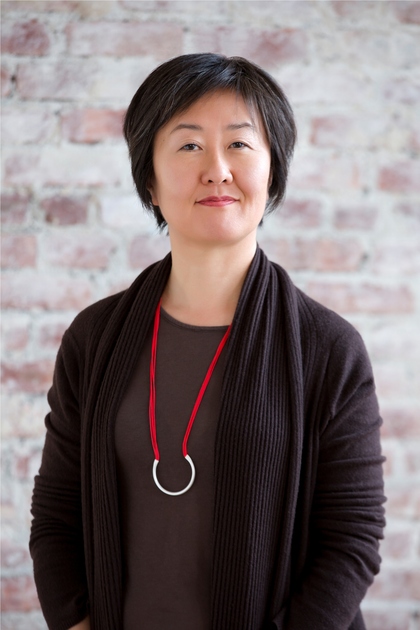
R
E
V N
E
X
T
Helen Koh appointed executive director of the Museum of Chinese in America
Portrait of Helen Koh, new executive director of the Museum of Chinese in America (MOCA), New York, 2012. Photo by Jack Deutsch. Courtesy MOCA.
On April 18, Helen Koh took up her new position as executive director of the Museum of Chinese in America (MOCA). Most recently, Koh led corporate relations for the Rhode Island School of Design, before which she was associate director of cultural events at the Asia Society in New York, where she also co-managed the Asian American International Film Festival.
Architect and co-chair of MOCA’s Board of Trustees, Maya Lin, said of Koh in a press release: “After an extensive national search, it was very clear that her expertise and passion for Asian studies and her vision for inventive programs and creative audience-building strategies would inspire the Board and staff as we enter the next phase of MOCA’s growth.”
Indeed, since moving to its current Maya Lin-designed location in 2009, five times the size of its previous building on 70 Mulberry Street—which now functions as MOCA’s archive and research center—the museum has consistently expanded its programming. And with a diverse professional constituency, including designers, photographers, playwrights, filmmakers, actors and musicians alongside educators and scholars, we may expect to see more contemporary art exhibitions at the institution in the future.
“It is an exciting time to be at MOCA,” declared Koh on April 25, speaking at the combined opening of MOCA’s two current exhibitions: “America through a Chinese Lens” and “June 4, 1989: Media and Mobilization Beyond Tiananmen Square.” In addition to showing historical snapshots taken by Chinese professional and amateur photographers since the 1950s, the Herb Tam-curated “America through a Chinese Lens,” has enlisted new media artist An Xiao to post photos on MOCA’s Tumblr page that the artist will take as she travels through west and southwest America. Responding to the waves of popular protest in various countries recently, the “June 4” exhibition presents a narrative of the Tiananmen protests that culminated in the bloody crackdown by authorities in June 1989, reconstructed from Chinese-American and Chinese-language periodicals in the museum’s collection.
